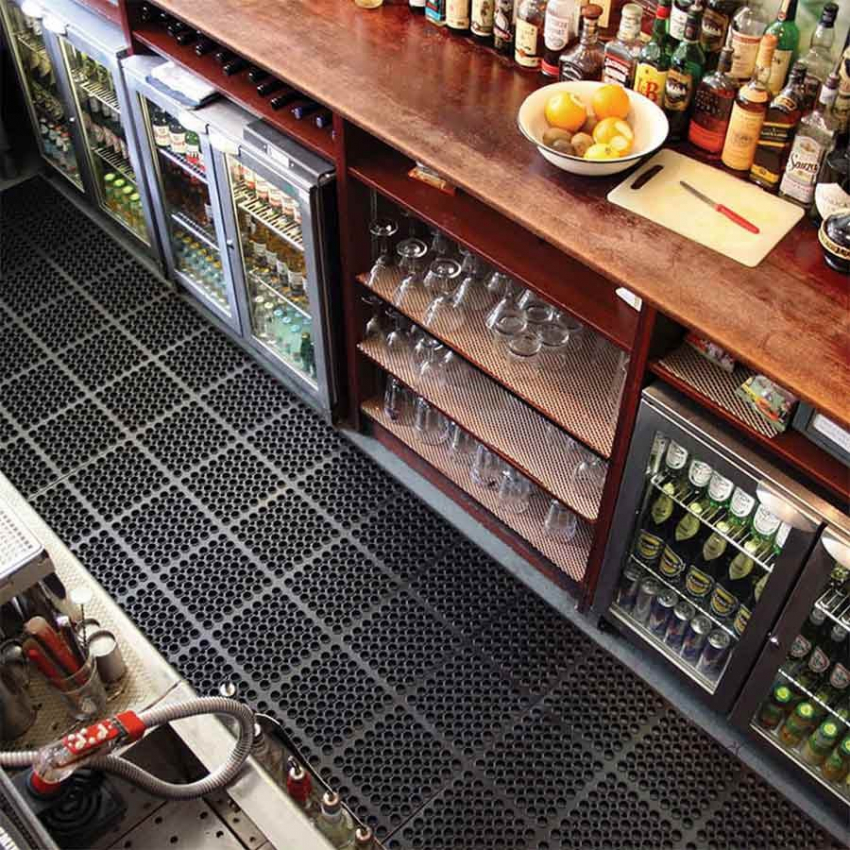










This popular honeycomb mat is designed for use in hotelsand restaurants.
The mat's honeycomb structure allows liquids and dirt to drain efficiently through the holes. The high level of comfort of the anti-fatigue mat prevents the negative effects of long periods of standing at work, thus contributing to workplace safety. Highly versatile, they can be used in both wet and dry environments. They can be used in manufacturing, warehousing and catering. Particularly popular in thehospitality industry as it reduces the risk of glass breakage and offers excellent slip resistance.
Non-resistant to grease and mineral oils. UV-resistant.
Cleaning: water jet or high-pressure cleaner.
The ideal solution for wet workplaces thanks to perforations ensuring efficient liquid drainage.
General industry, bars, gastronomy.
Loose fitting.

| COBAdeluxe |
Data sheet
| Format | Mat Slabs |
| Surface | Openwork |
| Properties | Anti-fatigue Draining |
| Thickness | 18 mm |
| Weight | |
| Resistant to chemicals | No |
| Environment | Dry environments Wetlands |
| Operating temperature | |
| Wear index | 3/3 (Excellent) |
| Anti-slip classification | R10 |
Industrial mats meet the needs of ergonomic workstations and employee well-being.
They prevent:
There are many uses for industrial mats:
Safety criteria: The mat must cover the entire workstation, be firmly attached to the floor, not shift or slide, and have bevelled edges to prevent falls.
Thickness and flexibility criteria: Contrary to what you might think, you shouldn't choose a very thick or very soft mat. The mat should have a certain elasticity, but still allow a comfortable standing position, without the user feeling slumped.
Environmental criteria :
Environmental hazard criteria : To establish more precise characteristics for a mat (antistatic properties or fire resistance etc...) we need to take into account the hazards present in the environment where the mat will be installed.
Where hazardous liquids are present in the working environment, the anti-slip properties and chemical resistance of industrial mats should be taken into account. The presence of openings on mats to allow the evacuation of fluids is essential.
Traffic criteria: We need to take into account the traffic that takes place on the equipment: how many workers can walk on it? How often, etc., in order to choose the most suitable mat.
Prevent the many problems associated with poor workstation ergonomics: RSI, static shock, bacterial proliferation, etc.
We offer a wide choice of industrial mats: on rolls, in standard sizes, made-to-measure or modular mats to suit all types of workstations.